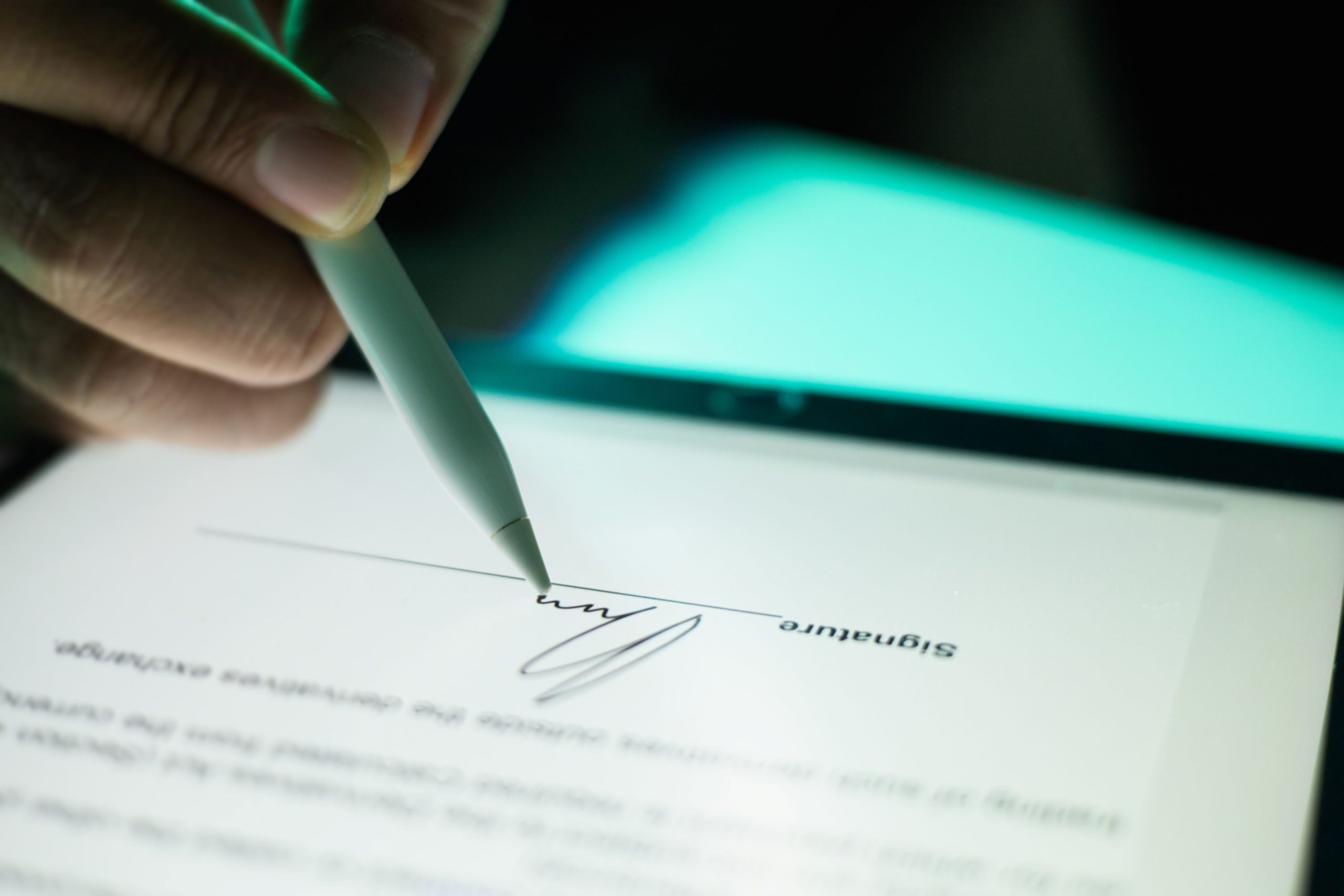
On 1 April 2024, the EPO introduced new rules that relaxed the requirements for documents used to evidence assignments and licences. In particular, these new rules are accepting of a wider range of authenticating signatures on evidentiary documents, including facsimile signatures, text string signatures and digital signatures, and mean that it will no longer be necessary to prove that the signing persons were entitled to sign on behalf of a company. In this article, we look at the changes in detail and provide guidance for those intending to make use of the more generous rules at the EPO.
What were the rules prior to 1 April 2024?
In order to record a transfer or licence of a patent or application at the EPO, it is necessary to submit evidence supporting the requested change. For many years, the EPO was notorious for only accepting evidence that included handwritten signatures on behalf of all parties to the agreement. This practice became particularly troublesome for applicants during the COVID pandemic, when physical signatures were more difficult to obtain, especially in cases where there were multiple assignors or assignees.
In 2021, the EPO confirmed that it would accept qualified electronic signatures (see OJ EPO 2021, A86). However, there was a burden upon a party wishing to use a qualified electronic signature to prove that the electronic signature met the numerous qualifying requirements. These were so burdensome that, in practice, it was often still easier to evidence using physical signatures.
The EPO would also examine evidentiary documents to confirm that the individuals signing were entitled to sign on behalf of the respective legal person party to the transaction. This meant that it was necessary to indicate on the evidentiary document the job title of the signing individual and, unless this position would clearly be entitled to sign (e.g. a director), it would be necessary to submit proof that the individual was empowered to sign such documents.
What were the changes?
On 1 April 2024, the EPO introduced new rules that are much more practicable in terms of evidentiary documents for recording transactions and finally bring the EPO’s rules in line with commercial reality.
In respect of signatures, these rules confirmed that the EPO would accept evidentiary documents authenticated by a handwritten signature, a facsimile signature (i.e. a reproduction of the person’s signature), a text string signature (i.e. with the typed name of the signatory positioned between forward slashes) or a digital signature meeting a much less stringent set of requirements (see OJ EPO 2024, A17). These requirements for digital signatures would simply be that the evidence is filed electronically, is legible, and is not infected with a computer virus or containing other malicious software (see OJ EPO 2024, A22).
The EPO also confirmed that, as a rule, it would not examine the authenticity of the signatures applied to a document, but reserved the right to require clarification or further evidence if doubts over authenticity arise.
Regarding entitlement to sign, the new rules set out that the EPO would require that the evidentiary document expressly indicates the position of a person signing on behalf of a legal person, but that entitlement would no longer be checked by the EPO.
What does this mean for applicants?
Of course, these changes will mean it is now much simpler for parties to record transactions affecting patents and applications at the EPO. However, this does not mean that assignments and licences may be handled in an altogether more cavalier manner.
First and foremost, where a transfer or licence is being agreed, it will still be imperative that the underlying legal instrument is legally effective under the relevant law governing the agreement. This will mean it will still be essential that documents are signed by individuals entitled to sign on behalf of the relevant parties, and that the signatures applied to those documents meet any requirements for signatures set out under the relevant law. Otherwise, even if the document would be accepted as evidence by the EPO, the transaction may not be legally brought into effect.
What these changes do mean is that it is much more likely that any properly executed legal instrument will also be sufficient evidence for the EPO to record the transaction on its register. In cases where it is compatible with the relevant governing law, parties should choose to execute their assignment with one of the accepted signatures listed above, and indicate the position of each person signing to enable them to avoid the need for a confirmatory document to be executed by the parties after the fact.
Furthermore, while the new rules are much more wide ranging in terms of the signatures they will accept, they are not encompassing of all means for executing transactions. One notable absence from the new rules is seals affixed to documents in place of signatures. Such seals on legal instruments are especially common in Japan, for example. However, while these new rules may not encompass circumstances like these, they will still make it much easier for parties to execute confirmatory documents, signed using one of the accepted signatures, to provide evidence for recording a transfer or licence.
For assistance recording an assignment or licence of your European patent, please get in touch with your usual GJE attorney or contact us at gje@gje.com.


